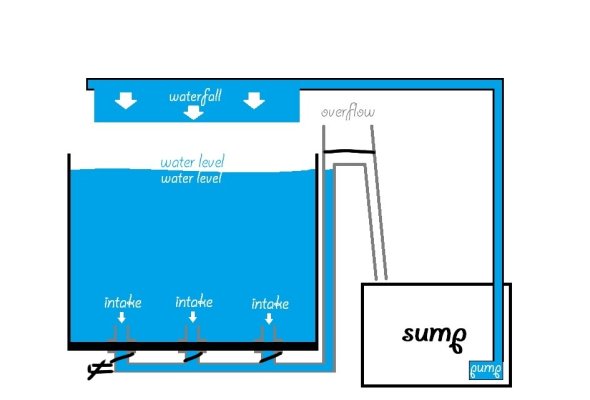albasoldier
Aquarium Advice Newbie
- Joined
- Nov 27, 2013
- Messages
- 1
Hi guys i'm new to this forum and i was planning on doing a DIY project, i have a question about plumbing.. i was thinking of going for a system like this (not on scale) with pvc pipes and the intakes will be covered with something that looks like a "tea infuser" so no fish or big debris fall through and clog up the piping.. the reason why i want my filter intakes to be on the bottom is because fish waste slowly falls down and i figured if i had multiple openings on the bottom i could possibly catch some of it before it touches the floor of the aquarium..

Now my question is:
is there a way of doing the same thing without that weird overflow method?
because i'd rather have those intakes go directly into my sump.. but i'm afraid of overflowing it and creating a swimming pool of my living room.
some details of the aquarium..
Length = 27 inches (68 cm)
Width = 27 inches (68 cm)
Height = 27 inches (68 cm)
Gallons = 82 (314 Liters)

Now my question is:
is there a way of doing the same thing without that weird overflow method?
because i'd rather have those intakes go directly into my sump.. but i'm afraid of overflowing it and creating a swimming pool of my living room.
some details of the aquarium..
Length = 27 inches (68 cm)
Width = 27 inches (68 cm)
Height = 27 inches (68 cm)
Gallons = 82 (314 Liters)

